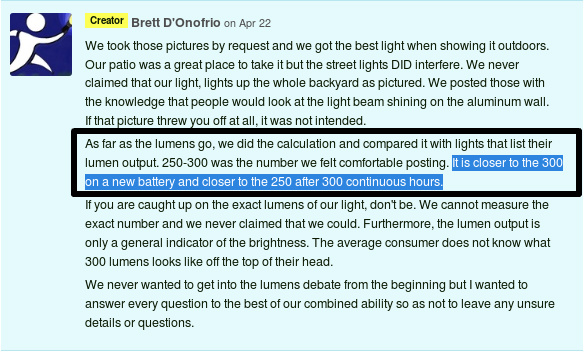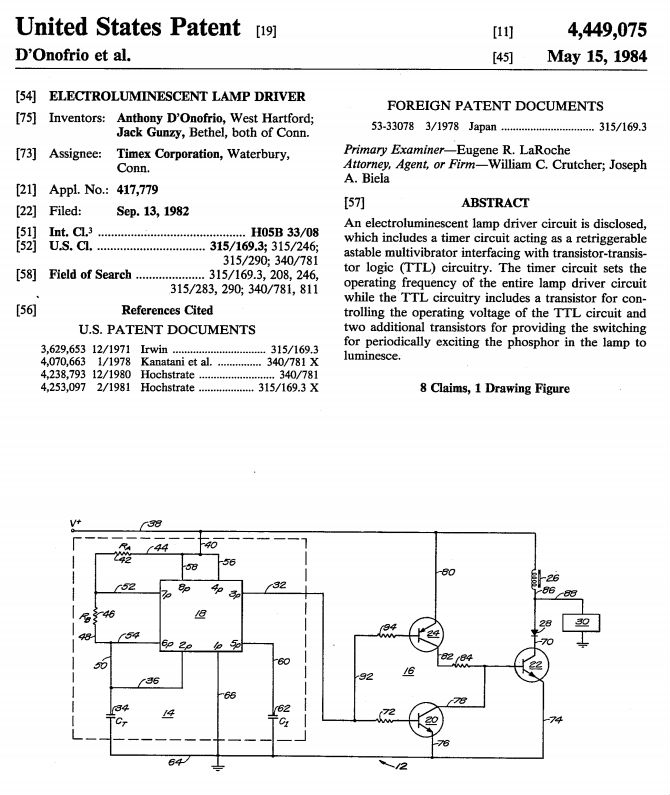I came across a somewhat suspcious/interesting flashlight on Kickstarter claiming to get 300hrs @ 300lms on a single D-cell.. called the Triatholight.
https://www.kickstarter.com/project...s/triatholighttm-by-enduring-technologies-llc
It goes without saying that anything claiming to get 300+ hours w/ 300 lumens with ANY light is a little suspicious, let alone a single D-cell.
I'm the first one to defend new technology, but when you add to that the lack of any specifics, science or explanation behind their "Battery Assist Module" (which appears to just be a driver) and refusal to elaborate, you have pretty good cause for suspicion.
(Also somewhat suspicious is the fact that someone who claims to have a Masters in Physics uses the word "Ampheres" [sic] multiple times..)
I'm really curious to hear what people think about this.
Of course there are already plenty of people in the Kickstarter comments more than happy to point small things like the fact that "you can't get more energy out than you put in."
(Kickstarter isn't a vendor, so I'm pretty sure it's okay to link.. don't think anyone will have to worry about this as competition heh.. If not though apologies mods.)
ETA:
(For anyone couldn't find the output/runtime claim, it's in the "comments" section - you have to click the "show older comments" button at the bottom. But here it is to make things simpler )
)

https://www.kickstarter.com/project...s/triatholighttm-by-enduring-technologies-llc
It goes without saying that anything claiming to get 300+ hours w/ 300 lumens with ANY light is a little suspicious, let alone a single D-cell.
I'm the first one to defend new technology, but when you add to that the lack of any specifics, science or explanation behind their "Battery Assist Module" (which appears to just be a driver) and refusal to elaborate, you have pretty good cause for suspicion.
(Also somewhat suspicious is the fact that someone who claims to have a Masters in Physics uses the word "Ampheres" [sic] multiple times..)
I'm really curious to hear what people think about this.
Of course there are already plenty of people in the Kickstarter comments more than happy to point small things like the fact that "you can't get more energy out than you put in."
(Kickstarter isn't a vendor, so I'm pretty sure it's okay to link.. don't think anyone will have to worry about this as competition heh.. If not though apologies mods.)
ETA:
(For anyone couldn't find the output/runtime claim, it's in the "comments" section - you have to click the "show older comments" button at the bottom. But here it is to make things simpler

Last edited:


 If not a scammer...
If not a scammer...